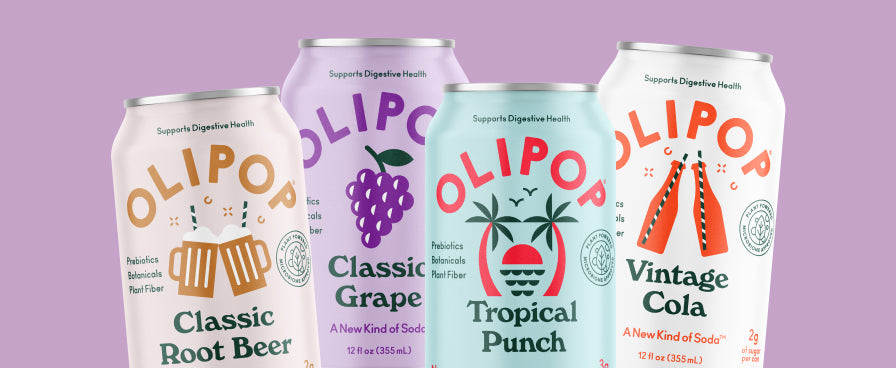Fad diets are nothing new. With lofty claims that they’ll help you drop pounds quickly, the latest popular fad diets have come and gone for decades. But what are fad diets? And why do we keep jumping on these bandwagons?
What Is a Fad Diet?
A fad diet is a trendy way of eating that promises to help you lose weight. Many fad diets suggest the elimination of certain foods from your diet, while a few focus on the timing of when to eat your meals. Bottom line? A fad diet is a popular way of eating that may or (very likely!) may not be based on science.
Are Fad Diets Bad?
Fad diets aren’t always a bad thing. Depending on which diet you’re exploring, following a well-balanced and nutritious diet could help support your health goals.
But a diet that requires you to only eat a handful of foods, or cut out entire nutritious food groups is usually not good for you. It can result in major nutritional gaps, an extreme calorie deficit, or other less desirable outcomes. Not to mention that these types of diets also perpetuate the belief that one-size-fits-all when it comes to beauty and health.
Fad Diets Through the Years
Over the years, many fad diets have come and gone. The fad diets trending at any particular time typically depend on which nutritional craze is “the rage” in that decade. And while diets were around as early as the 1930s (and perhaps even earlier), a wide variety of options started popping up around the 1950s.1
What are these fad diets? Let’s dig into some of the more popular diets over the years, starting back in the 1950s.
Popular Diets of the 1950s
The 1950s brought us the civil rights movement, I Love Lucy, and pencil dresses. And when it comes to diets, there are two that topped the popularity charts – the cabbage soup diet and the apple cider vinegar diet.
Cabbage Soup Diet
The Cabbage Soup Diet instructs you to eat a lot of — you guessed it — cabbage soup, along with small amounts of fruits, veggies, and meat. This diet is low in calories and does not offer a balanced variety of foods.
Apple Cider Vinegar Diet
The Apple Cider Vinegar Diet directs you to have 1-2 teaspoons of apple cider vinegar before each meal. The so-called science behind this is that doing so improves metabolism and the body’s ability to break down fat. While that “science” remains unsubstantiated, following this diet can leave some people with stomach ulcers, thanks to vinegar's high acidity.
Popular Diets of the 1960s
From Barbie dolls to bell bottoms, the 1960s brought us some beloved trends that continue to influence our lives even today! And, of course, this decade brought us some popular trendy diets too.
Drinking Man’s Diet
Mainly targeted towards men, this diet includes eschewing carbs – with a catch. People on this diet can drink as much alcohol as they want. Protein, fat, and veggies are fair game too. Think of it as a boozy keto diet!
Atkins Diet
Created by Dr. Robert Atkins, this diet encourages a high protein, very low carb diet to start, with the gradual introduction of more carbs as the diet progresses. The Atkins Diet was created for sustainable weight loss, but many people can’t stick to this way of eating forever.
Popular Diets of the 1970s
Hippie garb and peace signs made their presence known during the 1970s. The Godfather hit the silver screen and Beatles Mania took the music scene by storm. It should come as no surprise that certain fad diets showed up during this decade too.
Grapefruit Diet
The grapefruit diet, AKA the Hollywood diet, leans on the enzymes found in citrus foods that may help burn fat. On this diet, you're instructed to eat grapefruit before each meal. And the rest of your diet is extremely low in calories – typically less than 800 calories in total. While you're likely to lose weight on this diet because you're taking in so few calories, it certainly isn't healthy or sustainable!
Israeli Army Diet
The Israeli Army diet includes four phases, each lasting two days. For the first phase, you can only eat apples; the second phase allows for cheese; the third allows for chicken; the fourth allows for salad. This diet also requires people to drink four liters of water every single day.
Popular Diets of the 1980s
Big hair, neon nails, and Michael Jackson tunes dominated the 80s. And for those trying to drop some serious pounds, this decade also featured some extreme (and often bizarre) fad diets. In the 80s, the popular theme for dieting was leaning on liquids.
Liquid Protein Diet
The 80s were characterized by low-calorie diets that put users essentially into a state of starvation. And the liquid protein diet is exactly that: a low-calorie diet where you only drink liquids. This is typically a prescribed diet plan after procedures like bariatric, stomach, or intestinal surgeries, but only getting your calories from liquids is not a recommended (nor healthy) dieting plan for the average person who hasn’t had major surgery.
Lemon Juice Diet
The lemon juice diet involves consuming just a lemon juice-based mixture for 1 or 2 weeks, with no solid foods. You're sure to lose weight if you're only living off of a lemon juice mixture, but, as you can imagine, that's not exactly a healthy way to live. All that acid is bad for your teeth too!
Popular Diets of the 1990s
Britney Spears, low-fat, and high-carb diets became the things to follow in the 90s. Fat became enemy #1 and we had a free for all when it came to carb consumption. Yikes, right?
The Subway Diet
The Subway diet was popularized by a man who claims that he lost over 245 pounds in one year by eating sandwiches from a Subway restaurant. This diet consists of two 6-inch Subway sandwiches a day, minus cheese and mayo, and includes a daily walking regimen. This “diet” proved to be nothing more than clever advertising, and the man later went to jail for crimes unrelated to his diet fraud.
Mediterranean Diet
The Mediterranean Diet consists of foods that people who live by the Mediterranean Sea tend to eat. As a diet rich in fruits, veggies, seeds, beans, nuts, and whole grains, this diet is packed with antioxidants. It also limits less-nutritious foods like fried food and options with added sugars. (Maybe this one’s not so bad? Pizzas from around the Mediterranean, right?)
Popular Diets of the 2000s
Our diets came full circle in the 2000s and we started leaning on high protein, low carb diets. We also started exploring how the timing of our eating patterns influences our weight. And we started cutting out certain foods from our diets entirely.
Gluten-Free Diet
As the name implies, the Gluten-Free Diet is one that completely eliminates gluten, regardless of whether a person has a true Celiac disease diagnosis. People claim that by doing so, they feel fewer GI symptoms. And some people lose weight too. Quite the far cry from the high-carb diets of just a decade previous, no?
Baby Food Diet
Eating baby food jars instead of traditional meals may not sound appetizing, but that is the focus of the baby food diet. Replacing meals with jars of baby food helps you lose weight in the short term, simply because you're restricting your calorie intake. And seriously… baby food?
Keto Diet
The keto diet is perhaps the most popular diet of this century. As a high-fat, low-carb, and medium-protein diet, this diet puts people in a state of ketosis, ultimately resulting in weight loss.
Intermittent Fasting Diet
Intermittent fasting permits you to eat whatever you want, as long as you're eating at specified times of the day. You may follow a 16/8 pattern, which means you fast for 16 hours and eat for 8. You may also follow the 5:2 method, which means you fast for 2 days and eat for 5. Regardless of their intermittent fasting schedule, people tend to lose weight on this diet, but the science of its effects on long-term health is currently not conclusive.
Fad Diets: The Takeaway
The major connection behind these and other fad diets over the years is that most (if not all) are unhealthy, unrealistic, and oftentimes, not even that effective. Not to mention that they feed into the dangerous idea that you can’t be happy (or healthy) unless you’re skinny. This, as we talk about in our blog on diet culture, is just not the case.
You’ll also find that most fad diets aren’t based on any actual science. Where’s the study that proves that eating two 6-inch Subway sandwiches a day helps you lose weight? And don’t get us started on consuming baby food, grapefruit, or lemon juice…
Fad diets aren’t about being healthy, they’re about finding that miracle “quick fix” solution. And, unfortunately, there’s no such thing. The real key to healthy living is regular exercise and a diverse diet filled with healthy proteins, fats, complex carbs, and lots of gut-supporting fiber.
With OLIPOP, we can help you on that journey. Learn more about our story, our community, and the power-packed ingredients that’ll help you along the way.
Sources:
- Kuchkuntla AR, Limketkai B, Nanda S, Hurt RT, Mundi MS. Fad Diets: Hype or Hope? Curr Nutr Rep. 2018 Dec;7(4):310-323. doi: 10.1007/s13668-018-0242-1
- A fad diet is a trendy way of eating to help you lose weight. Many require the elimination of certain food groups or focus on the timing of your meals. But not all of them can provide the results they promise.
- Over the years, many fad diets have come and gone. The fad diets trending at any particular time typically depend on which nutritional craze is “the rage” in that decade. Like the cabbage soup diet in the 50s, the grapefruit diet in the 70s, or the keto diet today.
- Most fad diets are unhealthy, unrealistic, and oftentimes, not even that effective. The real key to healthy living is regular exercise and a diverse diet filled with healthy proteins, fats, complex carbs, and lots of gut-supporting fiber.
















